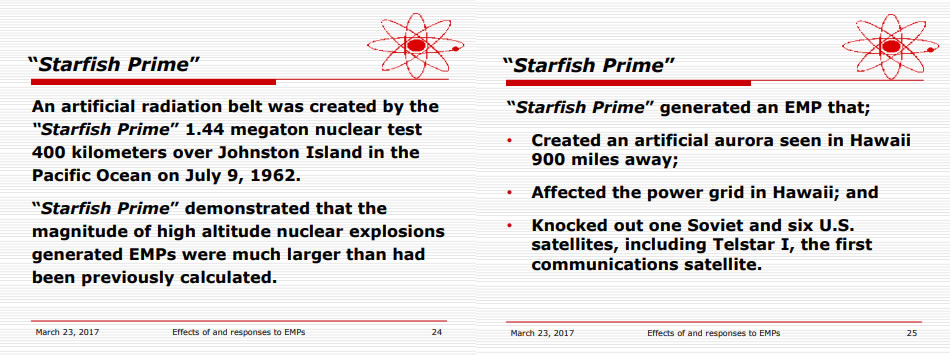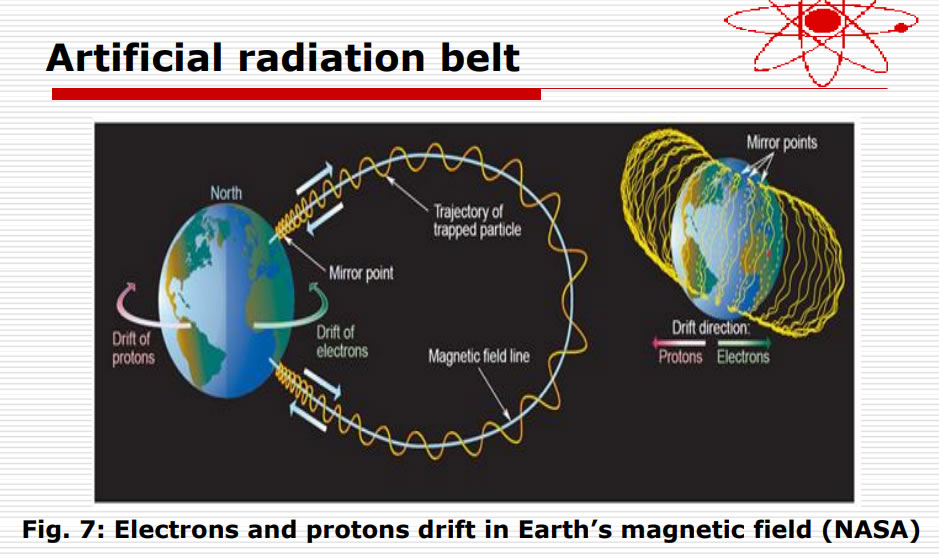EMP Effects
With tactical or even strategic nuclear strikes on the east-cost targets, we here in Texas would likely escape most or all of the EMP effects. This is even more likely if the attacks were ground-based—as they are most likely to be—instead of high-altitude detonations. However, since a larger or multiple devices could be such that those effects could reach us, it is a good idea to explore the associated issues and effects.
The EMP from a nuclear explosion needs altitude in order to have its most significant effects. From a ground-level detonation, the E1 and E2 components would have effects within a very limited range, making the effects very local. However, the E3 component of the EMP puluse could reach power lines buried in the ground that reach out to surrounding communities, causing lasting power disruptions on a wider scale.
The same EMP pulse generated by a high-altitude nuclear explosion would have far-reaching effects covering a wide geographic area. The higher the detonation location, the wider the affected area.
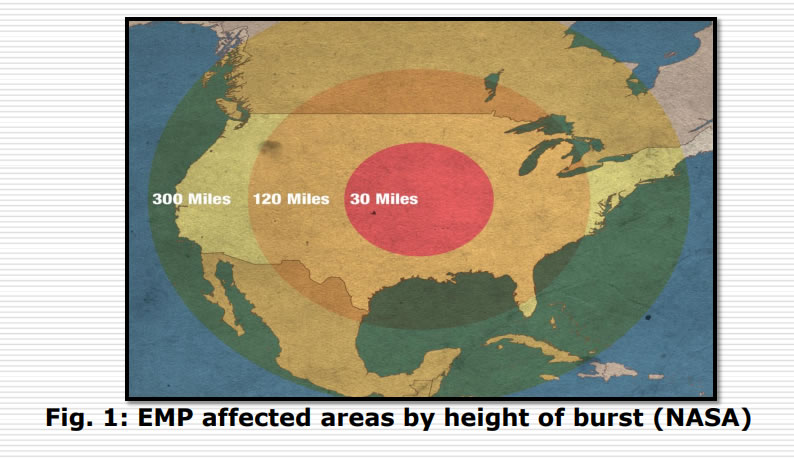
All EMPs are not created equal; the greater the energy of the nuclear explosion, the greater the EMP strength and larger the affected area. While some electronic circuits might endure a small EMP, they may be destroyed by a larger one. So all EMP results/effects are relative.
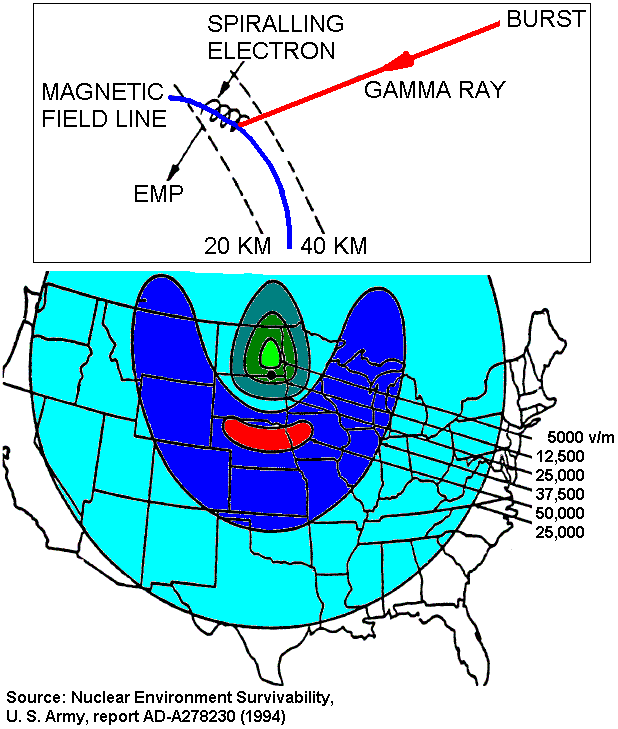
Texas has its own power grid, so it would take an EMP pulse that directly hit our state for us to likely lose power. However, strikes on multiple targets in the N.E. US could take out two or even three of the eastern-US power grids, including the SERC, RFC, and the NPCC. That would be disastrous.
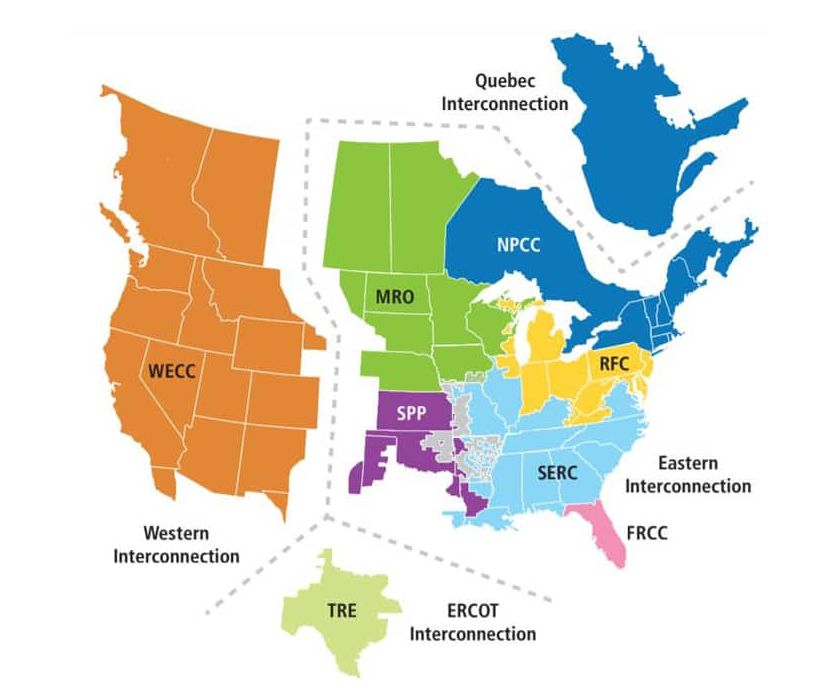
Vehicles & Electronic Devices
Vehicles should survive a .25kV/m EMP, but higher output EMPs will render most vehicles inoperative. Assume ~18-20kV/m per megaton of nuclear blast. Metal-bodied vehicles are less succeptible due to the faraday-cage effect their bodies create. The more computer chips and antennae in/on the vehicle, the more likely it is to be affected.
The best info on EMP and vehicles is found at this link, but the data is relegated to vehicles no newer than 2002. More information on EMP and its effects on things can be found in this article, which largely says what every other one does: that most vehicles can survive a 25kV/m exposure, but higher than that and...no one knows for sure.
Electronics that are solid state are most succeptible, especially if they are plugged into a socket when the pulse occurs.
Survivability of modern phones and tablets is debatable. Some published articles say they are largely safe from EMP effects unless plugged into a charger or other device. However, some say they need faraday cage (or microwave oven) protection; sometimes these contradictory statements are in the same article. It is likely, then, that these devices' survival are mostly dependent on the strength of the EMP.
High-altitude EMP bursts can damage or destroy orbiting satellites.
